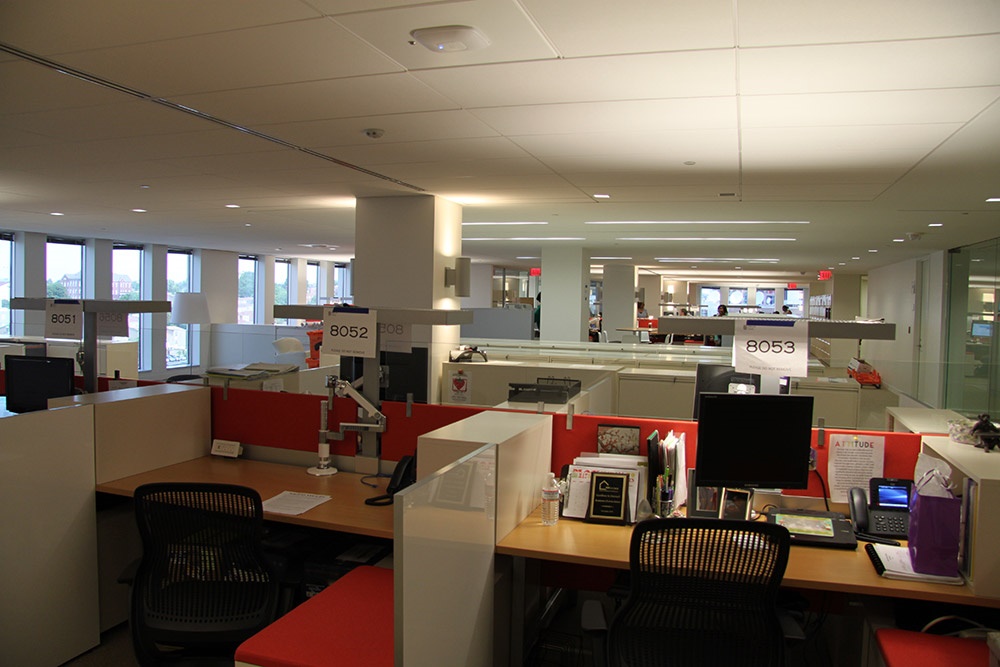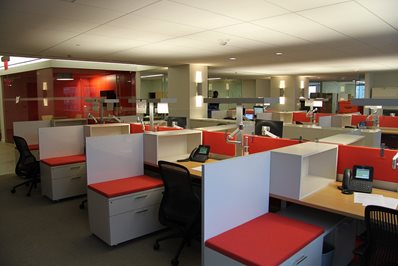Tayna Frett is on the phone. Again. Maybe she's organizing a trip to the office for someone who needs a bigger computer screen at home. Maybe she's focusing on scheduling or making sure that the paths through NeighborWork America's Washington, D.C., offices only go in one direction or that the mail is being picked up and bills are being paid.
But chances are, she's talking to someone to keep the national nonprofit's operations running smoothly at a time when office operations are mostly out of the office, in individual homes across the country. "There are a lot of moving pieces," says Frett, senior vice president of the Administrative Services and Facilities for NeighborWorks America. Frett shared her operational insights just before National Nonprofit Day (Aug. 17), which acknowledges the positive impact nonprofits have on communities both locally and worldwide.
But chances are, she's talking to someone to keep the national nonprofit's operations running smoothly at a time when office operations are mostly out of the office, in individual homes across the country. "There are a lot of moving pieces," says Frett, senior vice president of the Administrative Services and Facilities for NeighborWorks America. Frett shared her operational insights just before National Nonprofit Day (Aug. 17), which acknowledges the positive impact nonprofits have on communities both locally and worldwide.
Just over two years ago, NeighborWorks did a table-top exercise to test its Business Continuity Plan, says Frett. "The scenario was that we'd have to leave our space for a fire drill but we weren't able to go back for weeks. It was a facility displacement exercise. We found at the end that we did really well as an organization, because we telework pretty heavily. It showed that if we were displaced, business could continue as usual."
It hasn't been exactly "as usual," but five months after staffers left their offices for a two-day experiment to see if the organization's infrastructure could support 300 remote workers, NeighborWorks, which includes staff working across the country, has continued following through on its mission of creating opportunities for people to live in affordable homes, improve lives and strengthen communities.
 Frett says she's been back to the D.C. office a few times, where a handful of employees have returned to work. "We have to have a COVID-ready space because someone is going to be in there," she says. "It felt like a weekend. Usually there's energy. There's movement."
Frett says she's been back to the D.C. office a few times, where a handful of employees have returned to work. "We have to have a COVID-ready space because someone is going to be in there," she says. "It felt like a weekend. Usually there's energy. There's movement."NeighborWorks has an open floor plan, as opposed to Affordable Housing Alliance, a NeighborWorks network organization in New Jersey where Donna Blaze, CEO, says many staff members have offices where they can close the doors. Blaze says she considers her staff of 85 to be essential workers and many of them, across their seven locations, have continued to work in their offices through COVID. Their head of maintenance used to work with the school system, she says, and knew how to keep things clean and sanitized. Others worked from home, and those with kids at home started working off hours after schools and day cares closed.
It was another crisis that prepared Blaze's office for this one, at least from the technology perspective. "After we went through Hurricane Sandy, we upgraded everything that would allow us to work from home to the greatest extent possible," she says. "We moved a lot of things to a cloud-based system so people could access it from anywhere. We have several hotspots that we maintain. We placed generators in critical offices and buildings so that we'd have a hub to work from under any circumstances. We're looking to maintain a base of operations no matter what happens."
Frett says that teleworking at home feels different than it used to for employees across the nonprofit spectrum. When people teleworked before COVID, they may have been home alone. Now they're teleworking five days a week with an uncomfortable chair or sitting on the couch because a spouse is teleworking from the in-home office. "We have to think through how employees working from home can be successful," she says.
Many are finding ways to make it work, she says, and even some leaders who have been resistant to telework are finding that it can be successful. "This is teaching us a lot. It's the true definition of a work-life balance." Overall, she says, "On scale of one to 10, I'd give NeighborWorks an eight as to how well we've adjusted. That says a lot."
She says the organization did best with communication. "We created a COVID-response team almost immediately. We were able to make decisions and we had multiple voices in the room."
Challenges include changing an environment that is 70 percent open to accommodate social distancing. "We're very heavy with meetings in our environment. Now we have conference rooms that we can't put 20 people in anymore. We're thinking through all of those little details without knowing exactly how many staff will come back. We have to do the legwork regardless."
That means thinking of things like the importance of a no-touch garbage can or investing in individually wrapped utensils. "Be proactive and think about it now," she says.
Blaze says the toughest part has been managing human resources. What if someone asks to quarantine because they think they've been exposed to COVID but contact tracing doesn't show it? What if they choose a vacation location that's in a COVID hotspot? "There isn't a guidebook for this."
 She says 90 percent of her staff will do whatever they can to maintain routines and relationships and commitments to the community. "There's 10% that will cause me angst." Overall, she says, productivity has been down at a time they expect it to go up as supplemental unemployment disappears, forbearance programs end, and clients try to make ends meet. "Jobs aren't there for people to go back to," she says.
She says 90 percent of her staff will do whatever they can to maintain routines and relationships and commitments to the community. "There's 10% that will cause me angst." Overall, she says, productivity has been down at a time they expect it to go up as supplemental unemployment disappears, forbearance programs end, and clients try to make ends meet. "Jobs aren't there for people to go back to," she says.Frett and Blaze shared some advice and lessons learned, including:
- A team with multiple voices will help you be successful. "Get input from your stakeholders," Frett says. "Find out what employees concerned about. Don't make eagle-eye decisions without asking staff."
- Manage expectations and make sure staff can make informed decisions. "What will it look like when people come into the office?" says Frett. "Be intentionally specific about what people can expect the requirements around PPE and what workstations are going to look like."
- It's important to watch and predict. "We had been observing what was going on in the rest of the world and realized there were some key components," Blaze says. For instance, the organization has a homeless shelter where people congregate. They knew they'd need cleaning supplies and ordered disinfectant and hand sanitizers from venders before things ran out.
- Be nimble. "Every single day, we're watching the news to see if we are returning to stage one in D.C. Information is changing constantly," Frett says. "You may need to shift from one stage to another very quickly."
- Some jobs are higher risk than others. Because of this, "I've lost some staff who have retired early at a time where we could really use their expertise," says Blaze. "A pandemic is much different than the storms. Storms come and they're over and we know what to do to recover. But we haven't gotten to the point of recovering yet. We're still in crisis."
- Costs will change if an organization has to bring in plexiglass or PPE or change its footprint. "It varies from company to company." Frett says there are some areas where dollars aren't being used for instance, if no one is traveling, that could then be used for COVID response, like deep-cleaning an office.
- Leadership has a direct bearing on the staff's sense of confidence. "I wear a mask outside my office and everyone else does, too," Blaze says. "We give people specs for the sanitizer products we use. They know we're doing everything we can to protect them; if you do what you're supposed to do, we can keep each other safe.
- And speaking of safety: Keep safety precautions in mind, Frett says. "For us whether one person is coming in or 100 people, we need to make sure they understand what the safety rules are." That includes rules for things like fire safety and emergency evacuation, she says.

